Day 1 :
Keynote Forum
Ernesto Miguel Delgado Cidranes
Keynote: The power of magnetic stimulation in the control of pelvic floor disorders: Brainsway deep TMS therapy and BTL EMSELLA protocols
Time : 09:10-10:00

Biography:
Ernesto Delgado Cidranes MD. Ph.D. is a Spanish Anesthesiologist. Director, CEO, and Founder at Advanced Pain & Aesthetic Management Center Madrid. Editorial Board Member of Journal Pain Management and Therapy. USA AIUM Members, Reviewer and Advisor Journal of Ultrasound in Medicine, American Institute (USA), Member of Organizing Committee for World Pain Medicine Conferences. Expert in pain treatment. Chairman Department of Anesthesia and Pain Medicine, Spanish University Health Ministry. International Professor of Advanced Ultrasound. Heat Pain Unit La Milagrosa Hospital & Los Madroños Hospital Madrid Staff of Anesthesiology of Ruber Quirón Hospital Madrid He has an integrative and interdisciplinary concept in the treatment of pain.
Abstract:
Keynote Forum
Hischam Bassiouni
Klinikum St Marien Amberg, Germany
Keynote: Application of new techniques in neurosurgery for improving patients outcome and postoperative life quality
Time : 10:00-10:50

Biography:
Abstract:
In recent years several major technical advances particularly in the treatment of brain and spinal tumors, vascular malformations and skull base surgery have been introduced into neurosurgery. These include refinements in microsurgical techniques, microscopic fluorescent techniques (e.g. 5-ALA, ICG-angiography, etc.) for maximal safe resection of intrinsic brain tumors and treatment of aneurysms and AVMs, introduction of neuroendoscopy and routine usage of intra-operative neuromonitoring in appropriate cases. We present these latest technical advances in the field of neurooncology, for the resection of skull base lesions and for the treatment of vascular malformations demonstrating their impact on preserving neurological integrity with resultant preservation of patient’s life quality after micro neurosurgical resection of tumors (e.g. Glioma, meningioma, neurinoma/schwannomas, etc.) treatment of vascular malformations (aneurysm, AVM, cavernoma) and treatment of skull base lesions. Appropriate selection and application of these new techniques under discussion in neurosurgery has resulted in a better outcome after microsurgical treatment of brain and spinal tumors, vascular malformations and skull base lesions. This includes more radical and safer tumor resection with avoidance of new neurological deficits and with preservation of patient’s neurological integrity, prolonged life expectancy in malignant brain tumors and preservation of patient’s life quality after surgery.
Keynote Forum
Sawsan Abuhamdah
Al Ain University of Science and Technology, United Arab Emirates
Keynote: Vanillin attenuated behavioral impairments, neurochemical deficts in a mouse model of Alzheimer’s disease
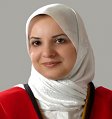
Biography:
Sawsan Abuhamdah is a Jordanian Registered Pharmacist. She has completed her PhD from Durham University, UK and Postdoctoral studies from Granada Medical School, Department of Pharmacology, Spain and has won Postdoctoral Fulbright Research Award at the University of Toledo, Department of pharmacology and experimental therapeuticsSawsan Abuhamdah is a Jordanian Registered Pharmacist. She has completed her PhD from Durham University, UK and Postdoctoral studies from Granada Medical School, Department of Pharmacology, Spain and has won Postdoctoral Fulbright Research Award at the University of Toledo, Department of pharmacology and experimental therapeutics, Ohio, USA. She worked as an Associate Professor at the Faculty of Pharmacy, University of Jordan and now is currently working as a Deputy Dean, College of Pharmacy, Al Ain University of Science and Technology, Abu Dhabi, UAE. She has published many research articles in peer-reviewed journals. She is also a Member of the British Pharmacological Society (BPS), British Neuroscience Association (BNA), Sigma Phi Sigma pharmaceutical Sciences Honor Society, University of Toledo, USA, Jordan Pharmaceutical Association. She has been serving as an Editorial Board Member of reputable pharmaceutical journals., Ohio, USA. She worked as an Associate Professor at the Faculty of Pharmacy, University of Jordan and now is currently working as a Deputy Dean, College of Pharmacy, Al Ain University of Science and Technology, Abu Dhabi, UAE. She has published many research articles in peer-reviewed journals. She is also a Member of the British Pharmacological Society (BPS), British Neuroscience Association (BNA), Sigma Phi Sigma pharmaceutical Sciences Honor Society, University of Toledo, USA, Jordan Pharmaceutical Association. She has been serving as an Editorial Board Member of reputable pharmaceutical journals.
Abstract:
Background: Alzheimer's Disease (AD) is a progressive neurodegenerative disease where symptoms appear after significant neuronal loss. Current treatments for AD do not significantly alter the disease process, where they temporarily improve symptoms. In vitro data has indicated that low doses of vanillin reduce beta-amyloid aggregation and may possess cytoprotective effects. This research aims to investigate the effect of vanillin on the AlCl3 mouse model of AD and thus its possible usefulness in managing AD.
Method: Male albino mice were divided into 8 groups of 10. Each group received different treatments of AlCl3, AlCl3+vanillin (30, 60 or 120 mg kgG1 day G1), vanillin alone and control. These experiments lasted for 30 days after which animals were subjected to behavioral and neurochemical assessment. Analysis was carried out using one way analysis of variance (ANOVA) with Dunnett's post-test.
Result: Lower doses of vanillin led to improvements in behavioral and neurochemical deficits induced by AlCl3. Conversely, a high dose of vanillin caused an exaggeration in the behavioral and neurochemical deficits induced by AlCl3. Furthermore, highest dose vanillin treatment, on its own, inflicted behavioral and neurochemical deficits comparable to those caused by AlCl3.
Conclusion: It is concluded that vanillin negatively impacted cholinergic neuronal survival. Any marked benefits with lower doses of vanillin were attributed to its ability to indirectly increase synaptic acetylcholine abundance through blocking its degradation.
Keynote Forum
Nicandro Figueiredo
Keynote: Evidence-based review and guidelines for the management of myxopapillary and intramedullary ependymoma

Biography:
Nicandro Figueiredo is a Spinal Neurosurgeon from Brazil. He is currently working at Medcare Orthopedic and Spine Hospital, Dubai. He completed his Bachelors from University of Brasilia (UnB) and his Residency in Neurosurgery in Base Hospital of Brasilia. He also completed his Masters and PhD from the University of Brasilia, Brazil. He was selected for International Fellowship-training in Spinal Surgery in USA, at the Johns Hopkins Hospital, Baltimore and University of Wisconsin, Madison and Post-doctoral Research Fellow in Spinal Surgery in USA at the University of Wisconsin. He is also a Visiting Professor of Neurosurgery and Spinal Surgery in Brazil. He worked as a Consultant Spinal Neurosurgeon for 2 years in Riyadh, KSA, at Dr Sulaiman Al Habib Hospital. He is Board Certified as a Neurosurgeon in Brazil, as a Consultant Neuro-Spinal Surgeon and as a Specialist Spinal Neurosurgeon, Dubai. He is also a member of North American Spine Society, AO SPINE Society (AO-Middle-East), Congress of Neurological Surgeons (CNS-USA), Brazilian Spine Society (BSS), Brazilian Neurosurgical Society (SBN), Brazilian Academy of Neurosurgery (ABNc), Neurosurgical Society of Mato Grosso (vice-president-Brazil), Saudi Association of Neurological Surgery and Pan-Arab Spine Society (PASS). He is also an Academic Editor (Spinal Surgery Section) of the Journal Medicine and has also published many articles.
Abstract:
This systematic review about Intraspinal Ependymoma (ISE), limited to the previously established criteria, was based on 27 papers, including 1,211 patients Unfortunately, there were not many published case series in the last 10 years about spinal ependymoma and even lesser number of series showing separated data of the two subtypes of ependymoma, myxopapillary and cellular ependymoma, although their clinic-pathological behavior are quite different. The overall recurrence/progression rate was 16.29%. The highest incidence of recurrence disease occurred in patients submitted to partial resection plus radiotherapy 66.66% and the lowest 8% after total resection plus radiotherapy. The mean PFS was 65.5 months, 5 years PFS rate was 74.75%, and 10 years PFS rate 69.5%. Regarding studies including only Myxopapillary Ependymoma (MPE), based on 5 papers, 199 patients were included. The overall recurrence/progression rate was 24.12%, higher than for the average of all ependymoma 16.29% and much higher than for cellular 3.63%. Five and 10 years PFS was 68.75% and 62%, respectively. Interestingly, the highest incidence of recurrence disease occurred in patients submitted to subtotal alone and partial resection plus radiotherapy 100%, followed by subtotal plus radiotherapy 34.78%. Gross-total resection alone resulted in 15.21%, while gross-total plus radiotherapy reduced the recurrence rate to 5.26%. The overall 5 years PFS rate 68.75%, being 78.4% for patients submitted to surgery plus radiotherapy and 49.7% for those submitted to surgery only. The 10 years PFS rate 73%, being 75% for patients submitted to surgery plus radiotherapy, and 37% for those submitted to surgery only. A review of series including sufficient data regarding Intramedullary Ependymoma (IME), was based on 4 papers, including 143 patients. The overall recurrence/progression rate was 3.63%. The highest incidence of recurrence occurred in patients submitted to subtotal resection alone 5.26%, followed by gross-total alone 3.37%. This review provides level IV of medical evidence supporting that early diagnosis and better preoperative neurological status can improve the postoperative neurological outcome in patients treated with intraspinal ependymoma. This review provides level IV of medical evidence supporting the role of gross-total resection in the management of intraspinal ependymoma, especially when such a resection can be accomplished without major morbidity. This review provides level IV of medical evidence supporting the role of post-operative radiation therapy as an option to potentially reduce the recurrence/progression of the tumor in patients with intraspinal ependymoma submitted to incomplete resection. This review also provides level IV of medical evidence supporting the role of routine post-operative radiotherapy as an option to potentially reduce the recurrence/progression of the tumor in patients operated for myxopapillary ependymoma, even in patients who underwent gross-total resection. There were some limitations to this work. As a retrospective study, there was selection bias, limited comparable results and there is lack of a standardized way to describe the main results for most of the papers. Experience with patients having intraspinal ependymoma may be limited, even in larger medical centers. Yet, practicing neurosurgeons will encounter patients with those neoplasms and therefore need to be aware of their clinical presentation, diagnostic evaluation, and especially the best management options. Intraspinal ependymoma is not as benign as proposed by its histology, but has a high potential of recurrence and/or progression, about 16% in general, but can be as high as 24% for myxopapillary and as low as 4% for intramedullary ependymoma. Therefore, there is still controversy regarding the best management of those patients. In this broad and recent systematic review, could be noticed that for intraspinal ependymoma, in general, the highest recurrence rate occurred at the groups of patients submitted to incomplete resection, with or without radiotherapy and the lowest in those who underwent gross-total resection, with or without radiation therapy. The routine post-operative radiotherapy should be considered in patients operated for myxopapillary ependymoma, even in patients who underwent gross-total resection.
- Spine and Spinal Disorders|Spine Surgery | Neuropharmacology
Location: Dubai

Chair
Hischam Bassiouni
Klinikum St. Marien Amberg, Germany
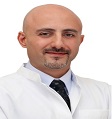
Co-Chair
Sebouh Kassis
Al Zahra Hospital, UAE
Session Introduction
Basem Awad
Mansoura University Hospital, Egypt
Title: Lateral extracavitary approach to spinal tumors
Time : 11:50-12:20
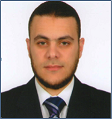
Biography:
Basem I. Awad is an Assistant Professor of Neurosurgery from Egypt, currently working at Mansoura University School of Medicine, in Mansoura, Egypt. He is the Educational Neuro officer at the AOSpine Egypt Council Board. He has completed his Master Degree of Surgery at Mansoura University, Egypt and Doctorate Degree at Joint between Case Western Reserve University, Cleveland, OH and Mansoura University. He also received the Crockard International Spine Fellowship at Cleveland Clinic and the AOSpine International Fellowship at the Center for Spinal Disorders, CO, USA. Recently, he completed Bioinformatics PostDoc Fellowship at Luxembourg Center for Systems Biomedicine, University of Luxembourg. Dr. Awad is also member of many international socities e.g. American Association of Neurosurgery (AANS), Congress of Neurosurgery (CNS), AOSpine, and North Americam Spine Society (NASS). He was selected to be on of the EDITORIAL BOARD for the Global Spine journal and World NEUROSURGERY Journal. His neurosurgical and scientific subspecializations includes spinal disorders and surgery, spinal trauma, spinal cord injury, neuro-oncology.
Abstract:
The surgical management of pathology involving the ventral aspect of the thoracic and upper lumbar spine is typically challenging. Thoracotomy provides direct ventral exposure of the spine and spinalcord. However the approach related morbidities could be markedly significant while a separate dorsal approach may be required for instrumentation. The Lateral Extracavitary Approach (LECA) is a dorsolateral approach that provides lateral and ventral access to thoracic and upper lumbar spine without entrance into the pleural cavity. By remaining extra pleural, the LECA avoids the complications noticed previously with thoracotomy. Neural decompression, tumor removal and fixation can all be accomplished via LECA, which makes it an invaluable tool in spinal surgery. This technical advantage has led to excellent neurological outcomes with nearly 75% of patients described in the literature revealing neurological improvement. In the present study, we reviewed 15 patients with spinal tumors treated with anterior and posterior resection and reconstruction from a single posterior approach. Pre- and post-operative neurological condition means blood loss, length of hospital stay after surgery and complications related directly to surgery were analyzed. Pre- and post-operative Computed Tomography (CT) scans and Magnetic Resonance Imaging (MRI) scans were evaluated. Our results showed neurological improvement in 69.2%, 29.2% experienced no change and 1.5% reported worse condition. Mean blood loss was 2,134 mL and hospital stay was 7.2 days. Total complication rate were 15.5%. In conclusion the adequate neural decompression combined with anterior and posterior column reconstruction is feasible through lateral extracavitary approach using a single posterior skin incision. Minimally Invasive (MIS) approaches are now being applied in all areas of the spine surgeries including LECA. MIS LECA approach is purported to have decreased operative time, reduced blood loss, less tissue dissection, less perioperative pain and earlier mobility.
Basem Awad
Mansoura University Hospital, Egypt
Title: Minimally invasive approach for intradural extra-medullary spinal tumors
Time : 12:20-12:50
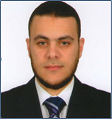
Biography:
Basem I. Awad is an Assistant Professor of Neurosurgery from Egypt, currently working at Mansoura University School of Medicine, in Mansoura, Egypt. He is the Educational Neuro officer at the AOSpine Egypt Council Board. He has completed his Master Degree of Surgery at Mansoura University, Egypt and Doctorate Degree at Joint between Case Western Reserve University, Cleveland, OH and Mansoura University. He also received the Crockard International Spine Fellowship at Cleveland Clinic and the AOSpine International Fellowship at the Center for Spinal Disorders, CO, USA. Recently, he completed Bioinformatics PostDoc Fellowship at Luxembourg Center for Systems Biomedicine, University of Luxembourg. Dr. Awad is also member of many international socities e.g. American Association of Neurosurgery (AANS), Congress of Neurosurgery (CNS), AOSpine, and North Americam Spine Society (NASS). He was selected to be on of the EDITORIAL BOARD for the Global Spine journal and World NEUROSURGERY Journal. His neurosurgical and scientific sub specializations includes spinal disorders and surgery, spinal trauma, spinal cord injury, neuro-oncology.
Abstract:
Arman Rahimmi
Kurdistan University of Medical Sciences, Iran
Title: Are anti-oxidants & anti-inflammatory compounds good choices for curing Parkinson’s disease?
Time : 14:00-14:30
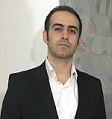
Biography:
Arman Rahimmi is a PhD student of Molecular Medicine in Kurdistan University Medical Sciences, Sanandaj, Iran. His research works has been focused on molecular nature of neurodegenerative disease especially Parkinson’s disease. His studies include the role of oxidative stress and inflammation in those diseases and evaluate potentials of antioxidants and anti-inflammatory compounds for treating them.
Abstract:
Parkinson’s Disease (PD) is a progressive neurodegenerative disorder, which is considered as one of the most prevalent diseases of Central Nervous System (CNS). Its clinical signs include both motor (resting tremor, rigidity and bradykinesia) and mental disorders (cognitive problems, behavioral impairments and dementia). These clinical symptoms are mainly the consequents of progressive loss of dopaminergic (DAergic) neurons in brain, especially those of Substantia Nigra (SN) and Striatum (ST). Accordingly, current PD therapies focus on maintaining dopamine levels of brain at normal range. However, this approach is fairly useful to control and manage Parkinson’s disease, it has some disadvantages. Firstly, patients need higher doses of drugs over time which it implies some serious side effects such as psychosis, motor fluctuations, and dyskinesias. Additionally, PD patients under this type of treatment develop a series of dopa-resistant motor symptoms (speech impairment, abnormal posture, and gait and balance problems) and dopa-resistant non-motor signs (anosmia, sleep disorders, autonomic dysfunction, mood impairment and pain) after a while. In this regard, previous studies indicate that Levodopa and other dopaminergic medications accelerate neuronal degeneration in some parkinsonian brains via production of free radicals and Reactive Oxygen Species (ROS). This is in addition to the main oxidative and inflammatory processes of PD. Literature strongly confirm the role of oxidative stress and inflammation in development and progression of Parkinson’s disease. So that, during the recent years, interest in administration of neuroprotective factors such as brain repairing antioxidants and anti-inflammatory drugs for management of PD is being popular, increasingly. On the other hand, since PD is a chronic and long-lasting disease, it is important to improve life quality and life expectancy of PD patients by appropriate medications. According to the above literature, it is important to understand the mechanism of action of these neuro-protectant factors and investigate the new and more effective ones. Therefore, the objective of this article is to do a comprehensive review on oxidative and inflammatory mechanisms playing role in pathogenesis of PD. We also highlight the studies concerning antioxidant and anti-inflammation therapies for PD and their molecular mechanisms of action.
Stefan Reguli
University Hospital Ostrava Poruba, Czech Republic
Title: Long non-coding RNA analysis in glioblastoma
Time : 14:30-15:00

Biography:
Stefan Reguli is a Neurosurgeon working in the University Hospital Ostrava Poruba, Czech Republic. His main field is Neuro-oncology, especially treating patients with gliomas. He is Coordinator of Ostrava Neuro-Oncology Center and has participated in several studies focused on basic brain tumor research.
Abstract:
Glioblastoma Multiforme (GBM) is the most frequent primary brain tumor of astrocytic origin. The prognosis of GBM patients is very poor with median of overall survival ranging between 12 and 15 months from diagnosis despite conventional therapeutic protocol consisting of maximal surgical resection followed by concomitant chemo-radiotherapy with Temozolomide and adjuvant Temozolomide in monotherapy. Therefore, a lot of financial resources and a great deal of effort are spent in the research of new therapeutic approaches that could prolong the survival of GBM patients. Long non-coding RNAs (lncRNAs) are a relatively new class of noncoding gene regulators playing critical roles in tumor biology, including GBM. From this perspective, lncRNAs seem to be promising therapeutic targets in GBM patients. We performed NGS analysis of fresh-frozen histopathologically confirmed GBM tissues and non-tumor brain tissues obtained from non-dominant anterior temporal cortexes resected during surgery for intractable epilepsy with no signs of dysplastic changes. Informed consent approved by the local Ethical Commission was obtained from each patient before the treatment. rRNA depletion and cDNA library preparation were performed with GeneRead rRNA depletion kit (Qiagen) and NEXTflex rapid directional qRNA-Seq Kit (Bioo Scientific), respectively. Sequencing was done using NextSeq 500 high output kit and NextSeq 500 instrument (both Illumina). Statistical analysis evaluated protein-coding and non-coding RNAs and their sequential variants with non-zero RPKM (reads per kilobase of transcript per million mapped reads) at least in one sample. We used CLC genomic workbench for the alignment and target counts. Targeted regulation of ZFAS1 level has been carried out by the transient transfection of specific siRNA in GBM stable cell lines (A172, U87MG and T98G). The success of transfection and viability were analyzed in vitro using qRT-PCR and MTT assay, respectively. We have demonstrated a dysregulation of many lncRNAs and protein-coding RNAs in GBM tissue in comparison with non-tumor brain tissue. However, the forced down regulation of ZFAS1, one of the most up-regulated lncRNAs in GBM tissue, was not found to have an impact on the viability of GBM cell lines in vitro.
Olaitan Jeremiah
Royal College of Surgeons in Ireland (RCSI), Ireland
Title: Evaluation of the effect of insulin sensitivity- enhancing lifestyle- and dietary- related adjuncts on antidepressant treatment response: A systematic review and meta-analysis
Time : 15:30-16:00
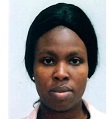
Biography:
Olaitan J. Jeremiah completed her B.Pharm. degree from the Faculty of Pharmacy of Obafemi Awolowo University (OAU), Ile-Ife, Nigeria with a distinction in 2010. She also completed a masters degree in pharmacology from the same university between 2012 and 2014 and was appointed a lecturer in the department of pharmacology, OAU, during the course of her M.Sc programme. Ms. O. J. Jeremiah is presently undertaking her PhD in neuropharmacology at the School of Pharmacy of RCSI, Dublin 2, under the supervision of Dr. Benedict K. Ryan (BSc(Pharm), MPharm, PhD, MPSI).
Abstract:
- Special Session
- Neurology | Neurosurgery |Brain Tumor & Cancer | Neurooncology
Location: Dubai

Chair
Ernesto Miguel Delgado Cidranes
Complutense University Madrid, Spain
Session Introduction
Nibras Al-sumaidaee
Baghdad Neurosurgical Teaching Hospital, Iraq
Title: Glioblastoma multiforme, demographical, clinical features, environmental factors and outcomes after surgical management
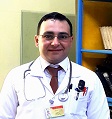
Biography:
Nibras Alsumaidaee is a Neurosurgeon. He has completed his training in Neurosurgery from Baghdad Medical Complex (Martyr Gazi Al-hariry for specialized surgical hospital). His interest is mainly towards neuro-oncology, functional neurosurgery.
Abstract:
Abderrahman Omer
Military Hospital-Sudan, Sudan
Title: Neurosurgery in Sudan, current and future challenges

Biography:
Abderrahman Omer is a neurosurgeon at Omdurman Military Hospital, to look after and manage neurosurgical problems as part of the neurosurgical department there, which serves both military and civilian patients. Before starting his career as a neurosurgeon, He joined the ministry of health as a general practitioner and an intern immediately after completing the medical school in the University of Gezira. After having the degree of clinical MD in neurosurgery in 2013,He joined the army hospital and started to work as a neurosurgeon dealing with trauma cases as part of trauma team and nontrauma cases in pediatrics, neuro-oncology and spine cases for simple non complicated cases and later , for the first time in the hospital, to operate on posterior fossa and more complex cases and just few weeks before they did the first transsphenoidal case with ENT team. His ambition is to start more subspecialised surgeries in his hospital and the whole country.
Abstract:
Pankaj R Nepal
B & C Teaching Hospital and Research Center Pvt. Ltd., Nepal
Title: Morphological variation of the confluences of sinuses in head

Biography:
Abstract:
Aim: The aim of the study is to analyze the morphological variation of the confluences of sinuses and propose a classification system.
Method: The study was based on the cross sectional analytical study. Data collection and analysis was done from all the cases of CT Venogram were evaluated in the CT console using the inbuilt software. This Venogram was evaluated using the VRT view of the sinuses and the part of the arterial phage of the angiogram were punched out. Evaluation of the sinuses was done by carefully rotating the venous sinus in all the direction. Evaluation of typical form of the confluence of sinus was identified and variations of the sinuses were evaluated for the rest atypical type.
Result: Total 70 cases were enrolled in the study. Overall the confluence of sinus of Torcula was identified as typical and atypical type. The typical types were further seen as solid or a fenestrated type. The atypical confluences of sinus were seen as (1) Aplastic/hypoplastic transverse sinus, (2) Transverse sinus connecting only with superior sagittal sinus, straight sinus or occipital sinus and (3) Various patterns of occipital sinus either unilateral branching, bilateral branching or no branching. The typical form of the confluences were present in only few cases, however rest were the atypical type. The aplastic or hypoplastic trasverse sinuses were more common in the left side. The presence of occipital sinus in the typical morphology gave the confluence a diamond shaped, however the shape were angled to one side when one of the draining sinus was not connected at Torcula.
Conclusion: Keeping the classification of confluence of sinus in mind could aid in the surgical planning and prevent an advertent injury to the anomalous sinus type.
Ritesh Nawkhare
Bangur Institute of Neurosciences, India
Title: Contiguous involvement of brain and spinal cord by plasma cell granuloma – A rare presentation

Biography:
Abstract:
Plasma cell granuloma of the Central Nervous System (CNS) is a rare entity. Primary intracranial lymphoma was first reported by West et al. in 1980 with around 60 cases reported till date. Previously reported locations include meninges, cerebral hemispheres, ventricles, hypothalamus, sellar region and cerebellum. Intracranial plasma cell granuloma is characterized radiologically by its extra axial, dural based location and homogeneous enhancement with contrast. Owing to it, meningioma, tuberculoma, sarcoidosis and wegners granulomatosis comprise important differential diagnosis. Plasma cell granuloma is generally a benign, non-recurring lesion. Treatment options for plasma cell granuloma include total/subtotal excision, steroids and radiotherapy. Technically inaccessible sites have been treated with biopsy followed by steroid therapy. In majority of cases a single plasma cell granuloma has been reported in the brain or spinal cord. Only two cases of plasma cell granuloma simultaneously involving the brain and spinal cord have been reported. We believe this is the first case showing a single lesion contiguously involving the brain and spinal cord in its extent and was managed surgically and discuss its clinical, radiological and pathological findings along with review of literature.
